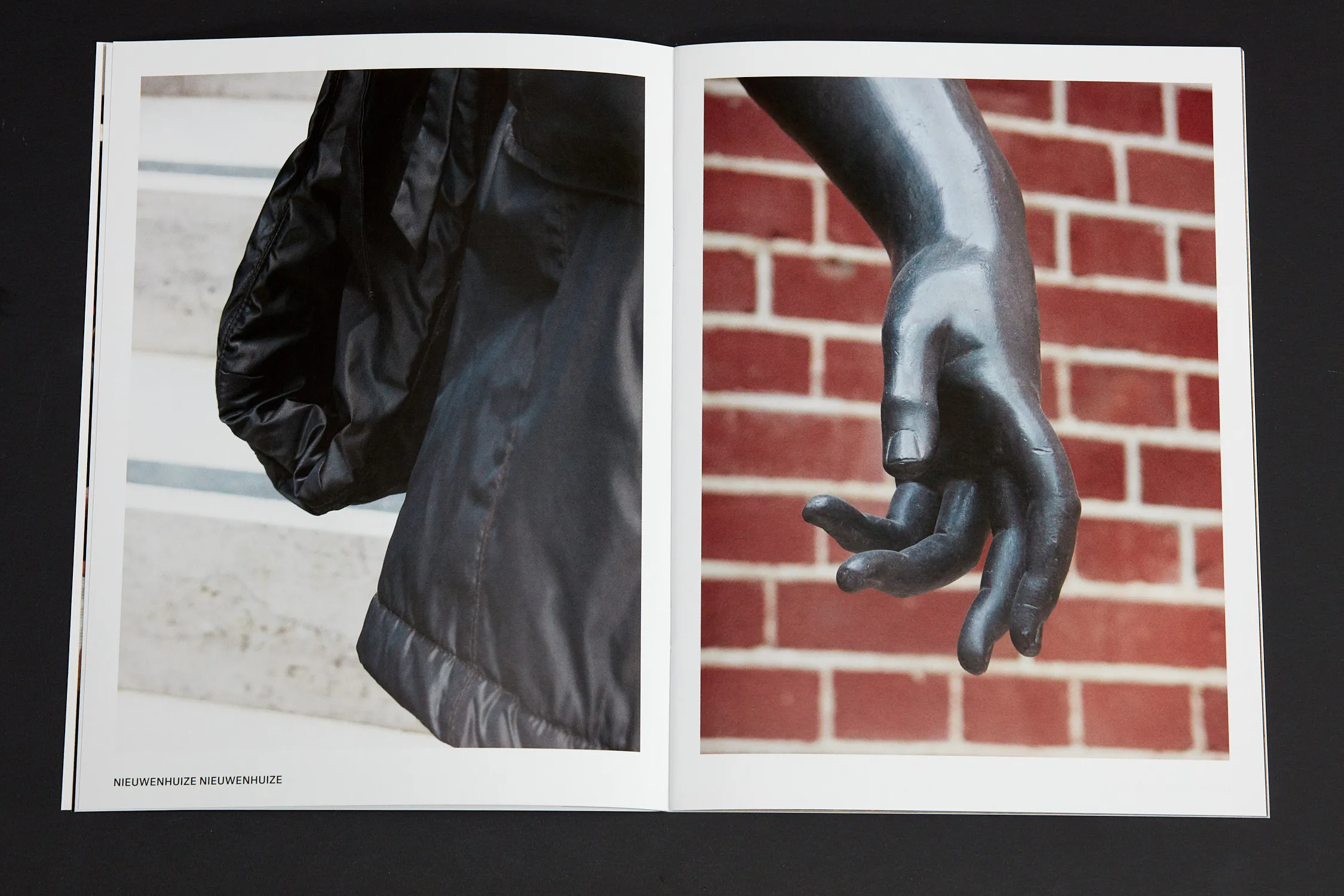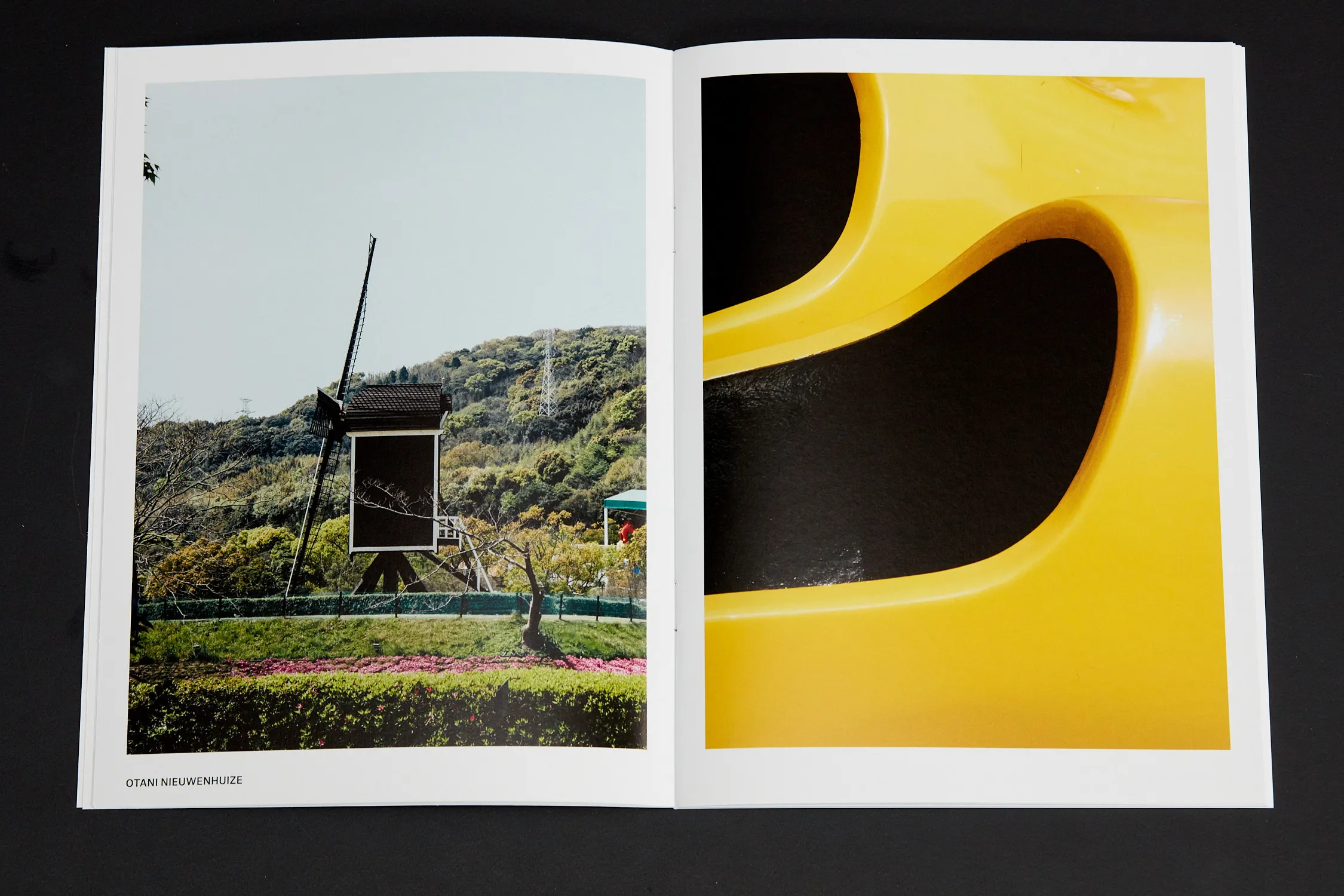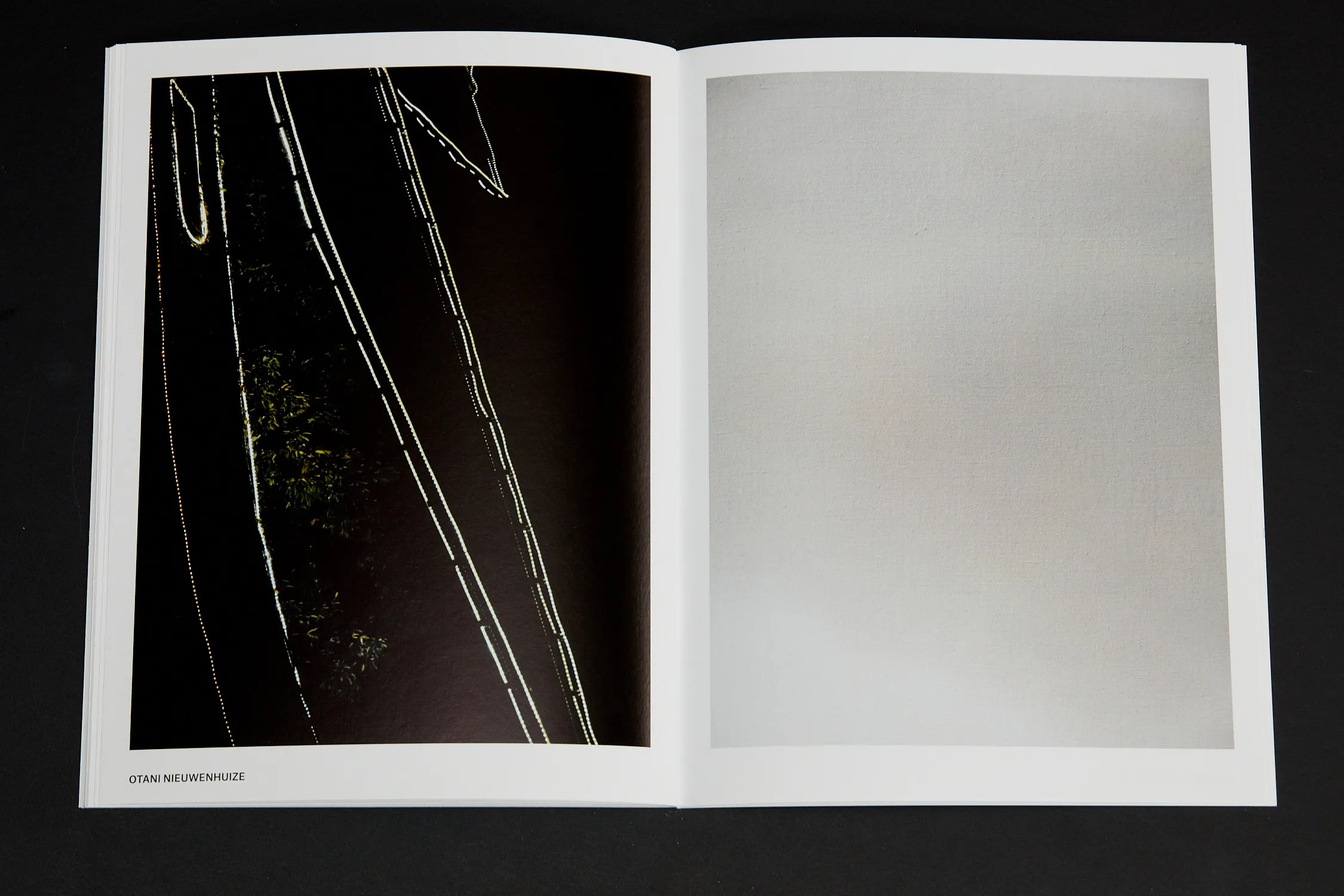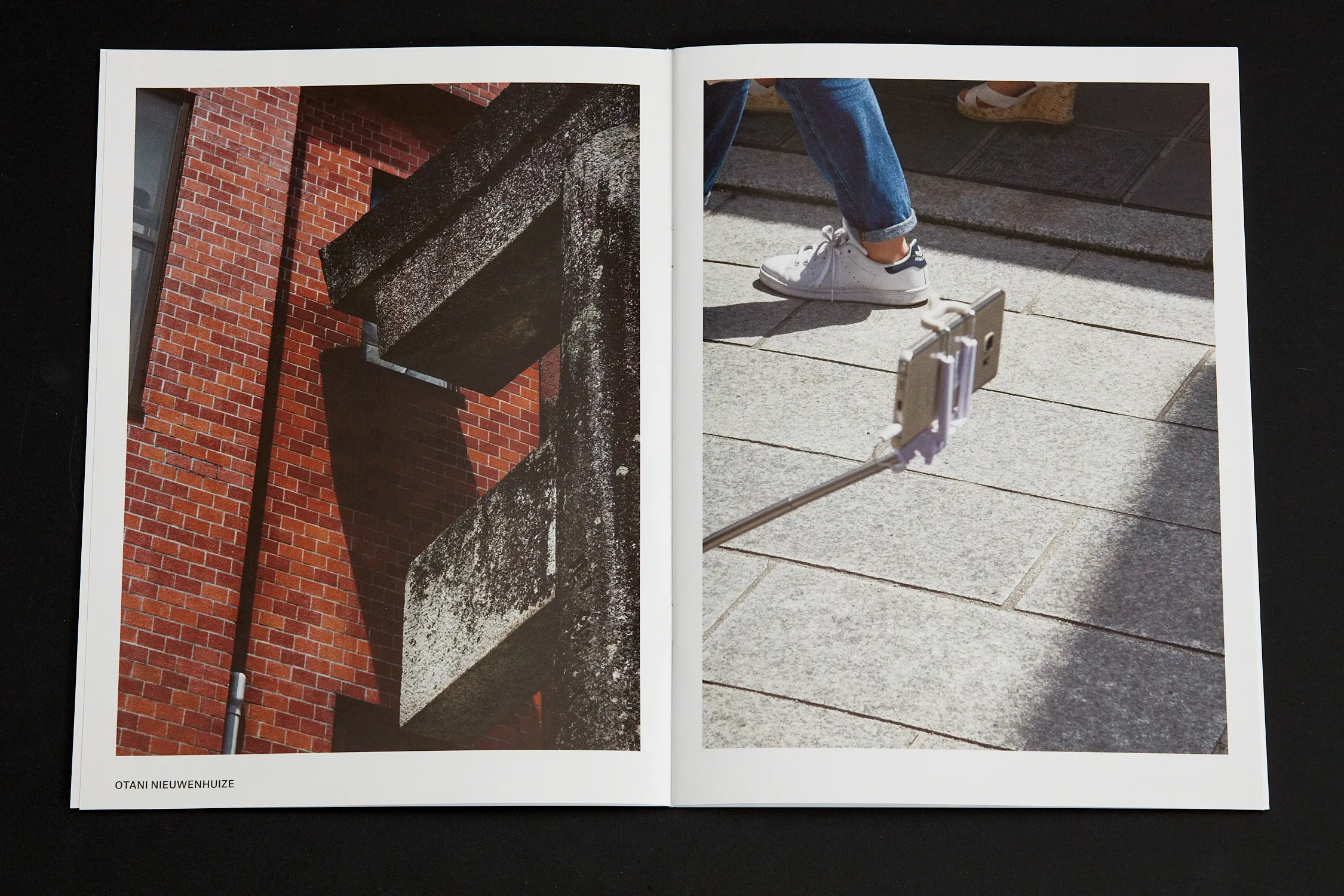OTANI NIEUWENHUIZE – photobook
Details
Japanese photographer Shinji Otani and Dutch photographer Johan Nieuwenhuize collaborate as artist duo OTANI NIEUWENHUIZE.
With their project OTANI NIEUWENHUIZE the artists look into Japanese and Dutch culture, and cultural tourism in general.
Behaving as tourists themselves they photograph sites of so-called cultural consumption. In the Netherlands they visit the Rijksmuseum in Amsterdam and De Efteling in Kaatsheuvel. In Japan they visit the shrine of Dazaifu Tenmangu in Dazaifu and the historic site of the former Dutch trading post Dejima in Nagasaki. Their fifth subject, amusement park Huis ten Bosch in Nagasaki Prefecture, represents both Japanese and Dutch culture.
The project was shown in solo exhibtions in the Dazaifu Tenmangu Shrine Museum, Dazaifu, Japan, in POST, Tokyo in 2016 and in Ibasho Gallery in Antwerp in 2017. Along with the exhibition an artist book of the project was published with texts by Taco Hidde Bakker and Robin van Emden (see below).
Two version were issued, a regular and a special edition. The regular version constists of five booklets and a textsheet, the special edition is a Japanese kirin wooden box which contains the five booklets plus two prints from the project.
OTANI NIEUWENHUIZE was part of the Holland-Kyushu program and is made possible by Fonds Kwadraat, Mondriaan Fund, STROOM Den Haag, the Shareholder and the Embassy of the Kingdom of the Netherlands in Tokyo.

Photographic memories
By Robin van Emden
“Nobody remembers everything. We often remember by knowing who else might know what we don’t.
In this way, we all become part of a transactive memory system.”DANIEL M. WEGNER, NEW YORK TIMES, AUG. 4, 2012
OTANI NIEUWENHUIZE, the latest project of Japanese photographer Shinji Otani and Dutch photographer Johan Nieuwenhuize, proves impressively able to convey the complex nature of transactive memory theory pioneered by the social psychologist Daniel M. Wegner. With this theory, Wegner argued that people can, under certain circumstances, develop a shared memory space, where each person is responsible for memorizing part of the total information available.
– text continues below –





By investigating how their collaboration impacts the formation of memories and the photographs that may come to represent them, Otani and Nieuwenhuize delve into the intricacies of transactive memory formation in close relationships. Photographing at the same time and place, they evoke the tension of a maturing relationship over time: both partners seek to maintain their autonomy, while exploring how and where to complement the other. Sensing which memories to share, which to outsource, which to forget.





Building on this interpersonal level, Otani and Nieuwenhuize’s different upbringings and artistic perspectives enable them to explore how their cultural backgrounds have served as transactive scaffolds, molding the minds and memories of each artist – an apt reflection on how transactive memory systems are part and parcel of the cultural latticework of links and pointers that orchestrate who is expected to remember what, when, how or where. Here, befittingly, the more abstract perspective of Nieuwenhuize seems to epitomize a Western cultural focus on objects, where Otani’s documentary perspective may equally exemplify a Japanese cultural attention to social context.



In successfully interweaving these various interpersonal and intercultural perspectives, Otani and Nieuwenhuize open up a rich shared memory space: a kaleidoscopic tribute to artistic reciprocity, transactive memory theory, and cross-cultural cooperation.
For further reading
Coan, J. a, Brown, C. L., & Beckes, L. (2011). Our Social Baseline: The Role of Social Proximity in Economy of Action. Social and Personality Psychology Compass, 12, 89–104.
Nisbett, R. E., & Masuda, T. (2003). Culture and point of view. Proceedings of the National Academy of Sciences of the United States of America, 100, 11163–11170.
Wegner, D. M. (1987). Transactive Memory: A Contemporary Analysis of the Group Mind. Theories of Group Behavior, 185–208.
Wegner, D. M., Erber, R., & Raymond, P. (1991). Transactive memory in close relationships. Journal of Personality and Social Psychology, 61, 923–929.
Yoo, Y. (2001). Developments of transactive memory systems and collective mind in virtual teams. The International Journal of Organizational Analysis, 9, 187–208.


